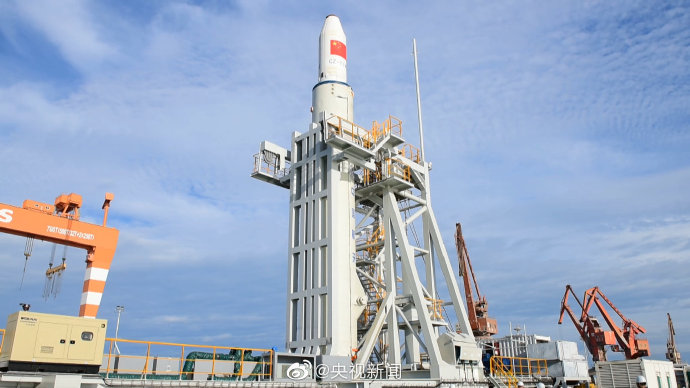China launches first rocket into space from platform at sea
China carried out the country's first seaborne space launch on Wednesday, from a platform in its territorial waters in the Yellow Sea, opening a new chapter in its space industry.
China carried out the country's first seaborne space launch on Wednesday, from a platform in its territorial waters in the Yellow Sea, opening a new chapter in its space industry.

A Long March 11 solid-propellant carrier rocket blasted off at 12:06 pm from a mobile launch platform – a modified submersible craft – in the Yellow Sea off the eastern province of Shandong and then sent seven satellites into orbit about 600 kilometers above the Earth.
The mission – the first seaborne space launch in the world in five years – showcased China's mastery of the technologies and capabilities required for such operations and indicates the country has found an alternative to its ground-based launch centers.
China is striving to expand its launch service portfolio and promote its carrier rockets to more countries, especially those wishing to have their own affordable satellite networks.
Designed and built by the China Academy of Launch Vehicle Technology, the Long March 11 is the only solid-fuel carrier rocket in the Long March family, the pillar of the country's space programs.
With a length of 20.8 meters, a diameter of 2 meters and a liftoff weight of 58 metric tons, it is capable of sending satellites to low-Earth orbit or Sun-synchronous orbit, according to the academy, which is part of State-owned space conglomerate China Aerospace Science and Technology Corp.
Its first flight, from the Jiuquan Satellite Launch Center in northwestern China's Gobi Desert in September 2015, ferried four satellites to a Sun-synchronous orbit.
Six Long March 11 rockets had been launched before the seaborne mission, placing 25 satellites into orbit. All the previous missions were launched from the Jiuquan center and were successful.
The mobile launch platform used in Wednesday's launch is owned and run by a Chinese maritime engineering company that asked not to be named due to contractual obligations.
Li Tongyu, Long March 11's project manager at the China Academy of Launch Vehicle Technology, said more sea-based launches will be conducted to verify its capacity to lift payloads in various orbits.
He said the academy plans to build a coastal port dedicated to supporting seaborne launch missions as well as a dedicated launch platform – instead of the current modified one – that will be capable of launching not only solid-propellant rockets but also liquid-propellant types, which are usually bigger and more powerful.
The world's first launch at sea was made in April 1967 with a Scout B carrier rocket, developed by the United States, from the San Marco platform of the Italian-owned Luigi Broglio Space Center, off the coast of Kenya. The most recent sea launch took place in May 2014, when Sea Launch, a multinational joint venture, sent a Zenit-3SL rocket from the company's mobile launch platform Odyssey in the Pacific Ocean, near Kiritimati, into orbit carrying a communication satellite.
Compared with conventional land-based launches, a sea mission has a lower risk of causing trouble for densely populated areas along the rocket's trajectory. The method also allows launches to be made near the equator, which increases the rocket's carrying capacity, lowers launch costs and extends the life span of some satellites, Li explained.

